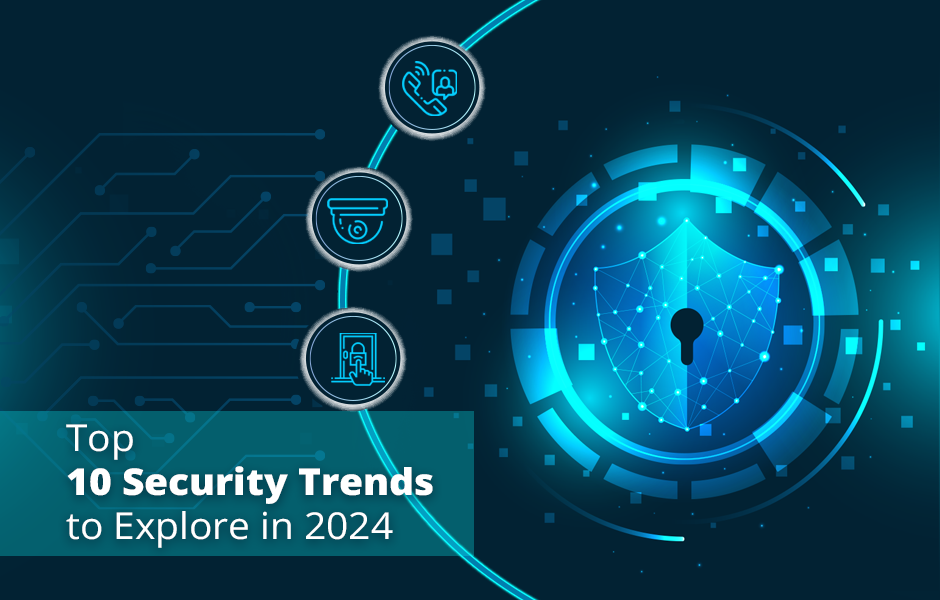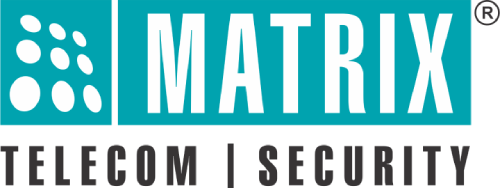
10 Top Security Trends to Explore in 2024
The ever-evolving state of security trends will have a significant impact on how businesses secure their operations. The growing importance of cybersecurity is fueling innovation, particularly in video surveillance systems. Through the seamless integration of AI, video surveillance systems are advancing to offer proactive surveillance capabilities. As businesses expand to the changing market dynamics, the demand for scalable security solutions that can be integrated with existing security infrastructure is on the rise. Government agencies are adopting advanced security technologies in the pursuit of building smart cities and in the wake of increasing crime rates. As the year progresses, there is a noticeable shift towards the implementation of comprehensive security strategies that are specifically designed to meet the demands of our increasingly interconnected world.
How Compromised Security Leads to Financial Losses
According to the World Security Report, companies worldwide lost over USD 1 trillion in revenue due to a variety of security incidents, including cyberattacks, data breaches, vandalism, and unauthorized access. Investors have observed an average stock price decrease of 29% following significant security breaches, highlighting the profound impact of inadequate security measures on financial stability, brand reputation, and regulatory compliance.
In light of these challenges, prioritizing comprehensive security strategies has become imperative for businesses. Proactive measures such as video surveillance and access control solutions are essential for managing risks and safeguarding the corporate environment. With threats constantly evolving, businesses must remain vigilant and adaptable to stay ahead in ensuring the security and integrity of their operations in 2024.
Here are the top security trends to watch out for in 2024.
1. Cyber Security will Become a Must for Video Surveillance Systems
According to a report by IBM, the global average cost of a data breach reached $4.45 million in 2023. Protecting data privacy and security in video surveillance systems is crucial due to the vast amount of video data they collect. Cybercriminals pose significant threats by potentially manipulating video feeds or gaining unauthorized access to cameras in sensitive areas due to weak passwords, outdated firmware, and unpatched software vulnerabilities.
To address this cybersecurity challenge in video surveillance, both government agencies and corporate entities are increasingly seeking solutions to safeguard sensitive information. Equipped with advanced cyber-secure features such as edge data encryption, secure HTTPS streaming, IP address filtering, signed firmware, and secure boot, Matrix IP Cameras are designed to be virtually hack-proof.
Certified and tested by Standardisation Testing and Quality Certification (STQC), body, all Matrix IP Cameras confirm the OWASP ASVS 4.0 L2 norms. Checkout here →
2. AI-based Video Analytics will Make IP Cameras Smarter
Artificial Intelligence (AI) is being integrated into Intelligent Video Analytics (IVA), transforming surveillance. In the future, IP cameras will offer advanced features like face detection and recognition. Retailers will benefit from IVA like people counting and heatmaps to analyze footfall patterns and improve profits. Public spaces and transport hubs will enhance security with IVAs like Missing/Suspicious Object Detection while manufacturing plants and warehouses will prioritize employee safety with IVAs like On-Duty Detection and Safety Helmet Detection.
IP cameras will be equipped with sound analytics such as gunshot detection, enabling swift law enforcement responses in public spaces. Construction sites can use this technology to detect unusual sounds indicating accidents or unauthorized activities, while residential areas can regulate noise levels. In industrial settings, adherence to workplace noise standards can be ensured. Additionally, the recognition of breaking glass in retail environments will alert security to potential break-ins. These advancements will establish a comprehensive security ecosystem that not only provides visual surveillance but also senses and analyzes the environment for enhanced safety and control.
Matrix PTZ IR Cameras feature IVAs like Object Abandon, Crowd Detection, People Counting, Safety Helmet Detection, etc. ensuring proactive surveillance.
3. 4K Ultra HD Image Quality will Align with Improved Storage and Bandwidth Efficiency
Modern IP Cameras offer 4K Ultra HD resolution, akin to high-end smart TVs, ideal for precise identification of individuals or objects. Additionally, they utilize warm/white LEDs, replacing traditional infrared (IR) LEDs, ensuring color and detailed HD images even in low-light environments. The latest addition to Matrix’s IP camera lineup, the All Color Cameras, features turret enclosures capturing high-quality colored images at night using warm LEDs.
- Checkout Matrix All Color Camera
High-resolution video poses a challenge due to its greater need for storage space and bandwidth. To tackle this, IP cameras are anticipated to integrate solutions aimed at mitigating these issues. For instance, Matrix IP cameras have Adaptive Streaming technology, which dynamically adjusts frame rates and bit rates during inactive periods. Furthermore, Smart Streaming divides a stream based on the importance of different regions, effectively reducing both storage and bandwidth requirements. This dual emphasis on excellent image quality and resource efficiency signifies the direction of future camera technology.
4. Public Transport Hubs Will Increase Security Budgets in the Wake of Smart Cities and Rising Crime Rate
Traveling now demands increased security measures due to rising concerns about assaults, theft, and crimes against women. Recognizing this urgency, the Indian government is prioritizing security in public transit. According to News 18, the Railway Ministry plans to install CCTV cameras in 15,000 railway coaches initially, to expand to 60,000 coaches in total. To ensure comprehensive coverage while respecting privacy, cameras will strategically be placed at doors, vestibules, and hallways within trains.
In dynamic rolling stock environments like public buses and trains, specialized IP cameras resilient to shocks, vibrations, and power fluctuations are crucial. Matrix’s new Ruggedized IP camera, designed for such environments, captures high-quality images in motion, making it an ideal choice. Certified with EN50155 and NEMA 4X, these cameras withstand extreme conditions, ensuring reliable performance.
- Checkout Matrix Ruggedized Camera
Moreover, in India, there’s a surge in CCTV camera installations on railway platforms, with specific standards set by the railways. Matrix stands out as the first Indian company to offer RDSO 6.0-compliant Bullet and Dome Network Cameras tailored to meet these standards.
5. Larger Enterprises Will Lean Towards Scalable NVRs for Improved Centralized Video Surveillance
The demand for Network Video Recorders (NVRs) is skyrocketing as businesses expand globally. With companies seeking centralized video surveillance across multiple locations, there’s a shift towards NVRs offering higher channel capacity and increased storage.
Based on data provided by Grand View Research Inc., the 2020 global market size for Network Video Recorders (NVRs) was estimated at USD 3 billion. Projections indicate anticipated growth, with expectations of reaching USD 5 billion by the conclusion of 2027.
Recognizing this trend, Matrix is gearing up to launch its 96 Channel NVR with 8 SATA Ports and a massive 144TB storage capacity. This NVR boasts a high throughput capacity of 512 Mbps and 4K decoding capability, delivering high-quality images for precise monitoring and analysis. Packed with advanced features like Cascading, Remote Accessibility via P2P, and real-time Push Notifications, this NVR is tailor-made for medium and large enterprises.
6. Video Surveillance will Become Increasingly Important for Small Businesses
According to a recent retail study, many small businesses lose close to $50k in a year due to factors such as vandalism, break-ins, and shoplifting. Small businesses, often operating with limited budgets and resources, need to prioritize security measures to safeguard their assets and ensure business continuity.
As security concerns escalate, more and more small businesses in India are expected to opt for video surveillance systems. In line with this trend, Matrix’s 4-channel NVRs emerge as an ideal solution. Featuring a fanless and ventless design, these NVRs offer a reliable and robust solution for small businesses seeking to enhance their security infrastructure. The absence of fans and vents ensures silent operation and minimizes the risk of dust accumulation, thereby enhancing the longevity and reliability of the surveillance system. With advanced features like cascading and a user-friendly interface, Matrix’s 4-channel NVRs promise to meet the evolving security needs of small businesses effectively.
7. The Demand for Video Management Software (VMS) is Set to Grow
The Video Management Software (VMS) market is witnessing substantial growth, with a projected Compound Annual Growth Rate (CAGR) of approximately 23.0% from 2018 to 2027, culminating in an estimated market size of USD 16.0 billion by 2027.
Today’s VMS solutions have evolved beyond basic monitoring functionalities, offering advanced features that expedite investigations and enhance operational efficiency. For instance, Matrix SATATYA SAMAS incorporates Time Lapse and Day-highlights capabilities, enabling users to efficiently review extensive recordings spanning days, months, or even years. This functionality is particularly advantageous in sectors such as construction, where tracking progress over extended periods is paramount.
With ongoing advancements in artificial intelligence (AI) and deep learning, VMS is poised to become even more sophisticated, providing automated threat detection, behavior analytics, and productivity enhancement tools across various industries.
8. Multi-factor Authentication and AI will Enhance Access Control Systems
Access control is seeing an increase in the use of multi-factor authentication (MFA), which strengthens security by requiring users to provide multiple credentials. By including additional layers of security like passcodes, key cards, or FaceIDs, this tiered approach reduces the possibility of unwanted access.
Face recognition systems are advancing security with the infusion of AI. Matrix COSEC ARGO FACE, for instance, will feature fake Face Detection, ensuring more protection by distinguishing real faces from deceptive or synthetic ones.
- Checkout Matrix COSEC ARGO FACE
9. Remote Work Will Reshape How Employees Mark Attendance
In the era of remote work and a culture embracing the flexibility to work from anywhere, mobile technology is emerging as a pivotal force in revolutionizing employee attendance tracking. Organizations are increasingly harnessing the power of smartphone apps and proximity technology to seamlessly streamline attendance processes for a dispersed workforce.
Remote door access control caters to evolving needs allowing organizations to adjust user permissions and door schedules in real-time, irrespective of physical locations. This facilitates secure access for vendors and employees but also aligns with the broader theme of anywhere access.
10. Dependency on Chinese Products Will Reduce in the Wake of NDAA Compliance
The increasing global demand for security systems adhering to the National Defense Authorization Act (NDAA) reflects governments’ efforts to reduce reliance on Chinese products. This focus on NDAA compliance is especially crucial for security contractors and stakeholders in the video surveillance industry, as non-compliance can lead to financial losses and legal consequences. The NDAA imposes restrictions on using telecommunication equipment from specific Chinese manufacturers. In 2024, a notable trend in video security is the widespread replacement of non-compliant systems with NDAA-approved alternatives.
Matrix IP Cameras and Network Video Recorders (NVRs) meet NDAA compliance standards, assuring users of adherence to these regulations. All Matrix products are researched, designed, and manufactured in India, emphasizing Matrix’s commitment to promoting domestic innovation and production.
To Sum Up
By choosing Matrix products, users can ensure a future-proof security infrastructure that seamlessly aligns with evolving standards and regulations. Connect with our experts at inquiry@matrixcomsec.com to get the best security solutions for your organization.

